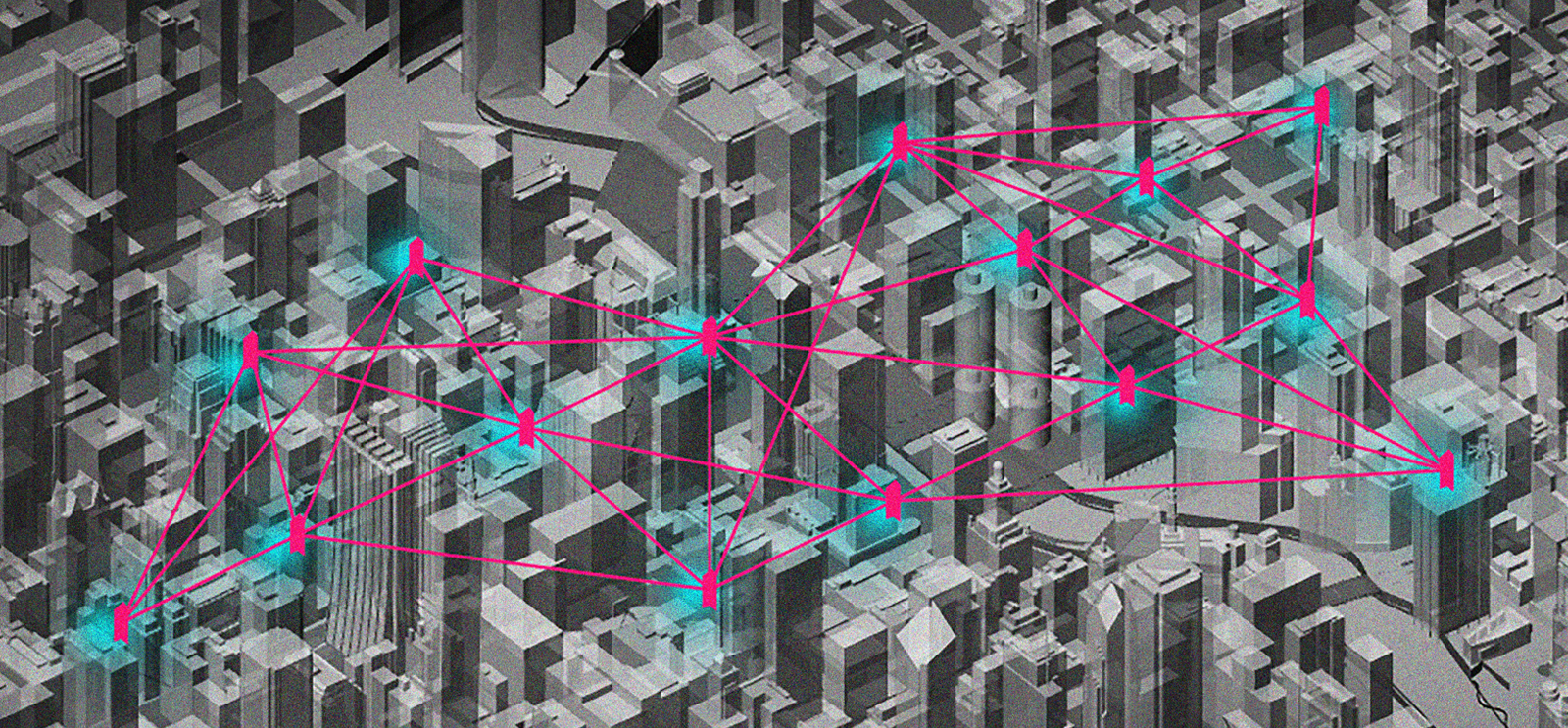
The design of the Array of Things nodes is intended to reflect the project’s goals of transparency and collaboration. (Illustration by George Joch)
The Array of Things takes Chicago’s pulse.
This spring, under the glow of Chicago’s traffic lights, 500 custom-designed sensors will start coming to life, busily gathering information on the city’s air quality, temperature, traffic, sound quality, and more.
The devices, soon to be mounted on traffic signal poles across the city, are the eyes, ears, and nose of the Array of Things, an ambitious effort to use highly localized, real-time data to address urban challenges.
Some have likened the Array of Things to a municipal Fitbit, monitoring the everyday life of the city. Charlie Catlett, who spearheaded the project, compares it to an array telescope. Like the Array of Things’ individual nodes, each dish of the telescope is powerful, “but together they can see much further and in more detail than any one of them could do on their own,” says Catlett, senior computer scientist at Argonne National Laboratory, senior fellow at UChicago’s Computation Institute (CI), and director of the CI’s Urban Center for Computation and Data.
Catlett recruited experts from the CI, a joint initiative of UChicago and Argonne, and from the School of the Art Institute of Chicago (SAIC) to design the nodes, which will be mounted 13 feet above the ground. Environmental sensors are housed within a beehive-like enclosure that connects to a rectangular box containing two small computers, each about the size of a deck of cards.
The data collected by the Array of Things will be made available to the public online, offering moment-by-moment, block-by-block insight into city life. Catlett hopes it will help researchers and citizens solve complex urban problems. Possible uses might include helping asthma sufferers avoid areas of poor air quality or detecting urban flooding in real time so the city can deploy its resources to prevent property damage.
The team is still deciding on precise locations for the nodes; the goal is to place them in areas where the data is most likely to lead to meaningful action, investment, or policy change. “We’re interested in how to make the city work better for people who need the city to work better, as opposed to people who would like the city to work better,” he says.
Because collected information can be used in whatever ways citizens devise, the project aims to give Chicagoans “the ability to advocate on their [own] behalf with fantastic data that a system like this can provide,” explains Douglas Pancoast of SAIC, who helped design the nodes. “We could potentially be building a platform that people could use to advocate for services or advocate for change or advocate for justice.”
The transparent, collaborative spirit of the Array of Things is reflected in the nodes’ design. “If the data is open and visible, then the instrument itself needs to be open and visible,” Pancoast says. “We’re using materials and aesthetic treatments that make you want to look at it.”
The nodes’ design evolved with the project. Initially, Catlett—who had gotten interested in wearable sensors and portable air quality monitors while working at Argonne—proposed to the city the idea of mounted lockboxes to house data-collecting equipment. The lockboxes would provide a power source and internet connection while protecting the devices from theft and vandalism.
To save time and effort, the plan to mount lockboxes to hold sensors morphed into mounting the sensors themselves (“if we’re going to go to the trouble of mounting something,” why not make it useful right off the bat, Catlett figured), and the Array of Things was born. A $3.1 million grant from the National Science Foundation helped fund the design and manufacture of the devices; the City of Chicago is paying for their installation.
Nine early prototypes mounted on the University of Chicago campus with custom-molded sensor enclosures proved too laborious and expensive to replicate. Reliability was a major concern—even one failure a year for each device would result in hundreds of service calls—as was Chicagoans’ privacy. (An early idea to count foot traffic by connecting to Bluetooth-enabled devices in the vicinity of the nodes was scrapped after residents raised concerns.) Also “really high on our list,” Catlett says, was making the instruments attractive, conspicuous, and unthreatening.
Catlett and Pancoast like the current futuristic-looking design, though both stress it is meant to be flexible and may change somewhat as the 500 nodes are installed in phases. Not only can the types of sensors change, the appearance of the nodes could be customized to each neighborhood. The team is conducting workshops and outreach around the city to solicit input on the project, and hopes ideas from the public might shape future iterations of the Array of Things.
In one workshop at Lane Tech College Prep in Chicago’s North Center neighborhood, Catlett and Pancoast are helping high school students build their own data collecting devices. The questions they’re asking the students to consider are not so different from the ones they continue to ask themselves: “What do you really care about? What do you want to know more about—and when you know more about it, aren’t you more capable to describe situations specifically and to advocate for change?”
